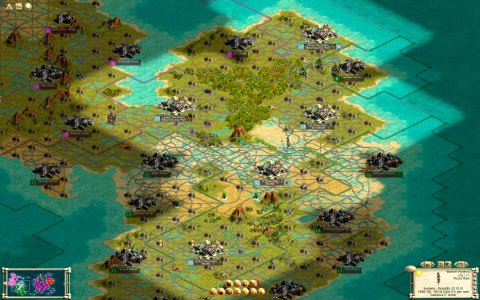ColossalYouth
Chieftain
- Joined
- Dec 11, 2023
- Messages
- 4
Hi
I've lurked here a while but never made an account.
I just completed a 5CC space race as Sumeria, on Monarch difficulty, launching in 1888. I think I could have gotten there much earlier if a) I wasn't so bad at the early game and b) had irrigated more, earlier.
I think my research was slower than it could have been (6-10 turns in the modern age) because I didn't have the pop I needed and I think this is due to not having grown cities as quickly as I could.
When's a good time to start switching mines to irrigated tiles? I didn't go straight away when I got Republic because in a 5CC game my cities were already a decent size and I'd have hit the 12 pop limit pre-sanitation, so I gradually started doing a bit of irrigating after I'd built hospitals.
Is it recommended to irrigate basically everything you can at that point? My biggest city by the end was Ur with 32 pop, but my four main cities still had quite a lot of mined grassland surrounding them.
What other methods can you use to maximise science output? I built roads on every worked tile and built all the commerce improvements I could, had thousands of excess gold I didn't know what to do with and was also quite lucky with wonders.
I missed the Colossus but got:
- Great Library
- Hanging Gardens
- SoZ (to fight off the Aztecs I spawned right next to)
- Copernicus
- Leonardo
- Newton
- Smith
- Hoover
- ToE
- UN (to prevent AI getting diplo victory)
- SETI
Any advice on this would be much appreciated as it's always been my weakness, as well as balancing priorities in the early game.
Thanks!
I've lurked here a while but never made an account.
I just completed a 5CC space race as Sumeria, on Monarch difficulty, launching in 1888. I think I could have gotten there much earlier if a) I wasn't so bad at the early game and b) had irrigated more, earlier.
I think my research was slower than it could have been (6-10 turns in the modern age) because I didn't have the pop I needed and I think this is due to not having grown cities as quickly as I could.
When's a good time to start switching mines to irrigated tiles? I didn't go straight away when I got Republic because in a 5CC game my cities were already a decent size and I'd have hit the 12 pop limit pre-sanitation, so I gradually started doing a bit of irrigating after I'd built hospitals.
Is it recommended to irrigate basically everything you can at that point? My biggest city by the end was Ur with 32 pop, but my four main cities still had quite a lot of mined grassland surrounding them.
What other methods can you use to maximise science output? I built roads on every worked tile and built all the commerce improvements I could, had thousands of excess gold I didn't know what to do with and was also quite lucky with wonders.
I missed the Colossus but got:
- Great Library
- Hanging Gardens
- SoZ (to fight off the Aztecs I spawned right next to)
- Copernicus
- Leonardo
- Newton
- Smith
- Hoover
- ToE
- UN (to prevent AI getting diplo victory)
- SETI
Any advice on this would be much appreciated as it's always been my weakness, as well as balancing priorities in the early game.
Thanks!





